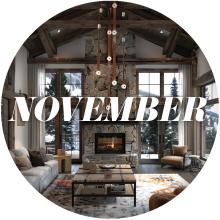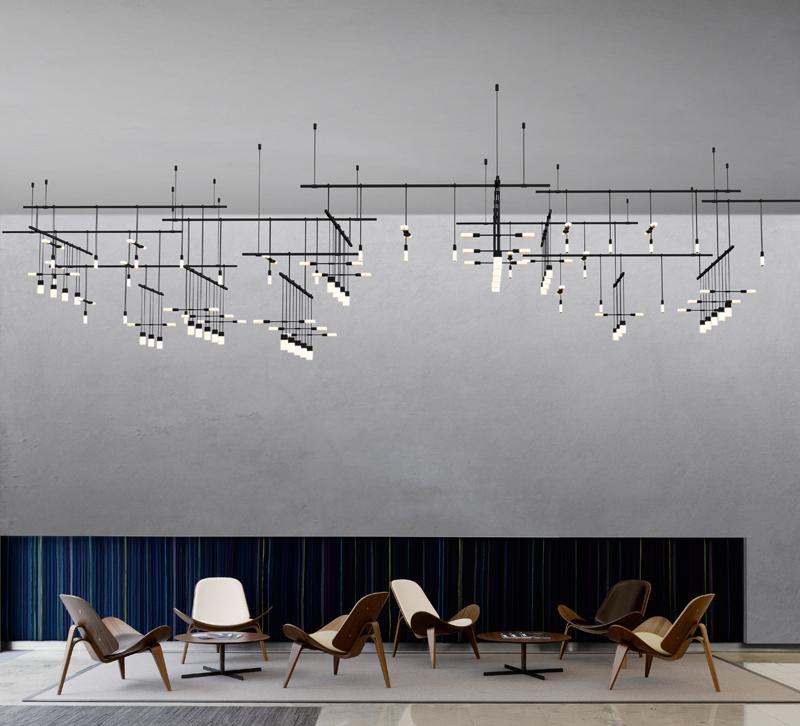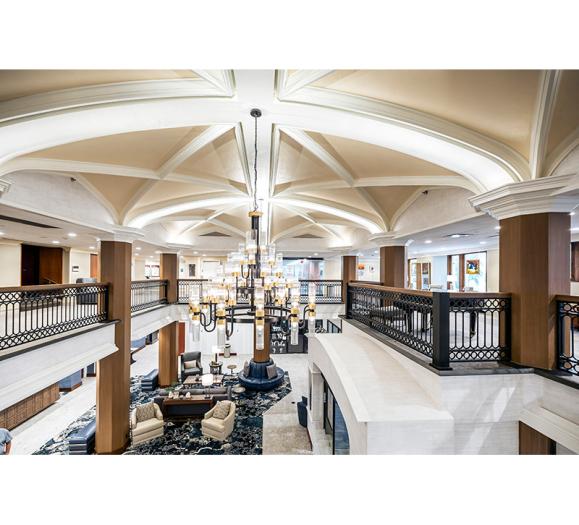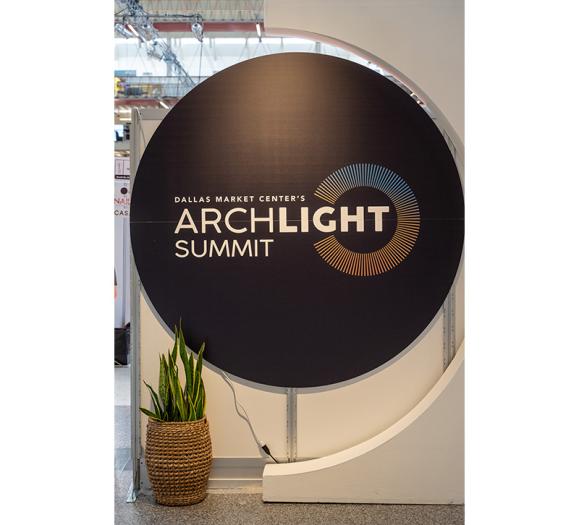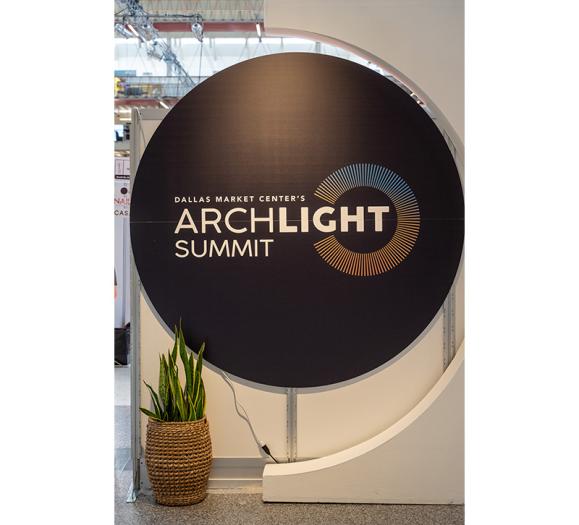For nearly 50 years, lighting designer Robert Sonneman has been a pioneer of contemporary lighting. Born and raised in New York City, he took an interest in art from a young age. He started his career at a lighting store called George Kovacs, where he learned about the European minimal modern perspective. He has since worked as the former CEO of Ralph Lauren Home Product Development, founded his own lighting company and displayed his work at museums all over the country.
In this illuminating Designer Q&A, Sonneman told us about his career highlights, his design sensibility and his newest modernist fixture, Suspenders Precise.
You’ve now worked in lighting design for 50 years. What changes have you seen in the lighting industry? How have design styles and technological innovations developed?
Everything about lighting has changed in the past 50 years. No longer generated by burning fuel or filaments, lighting is produced by exciting electronic signals to produce luminous energy. LED has changed it all. Once a decorative object that supported a container of heat generating, incandescent and fluorescent burning sources, lighting has moved from decorative accessory to functional design that achieves performance and utility from innovative applications of design technology.
Lighting is at its infancy in terms of its next wave of evolution. Integration is the key to the evolution of lighting science. Once we understand that electronically generated illumination is a wave in the spectrum of energy, we can control, direct and manage illumination as a component in a broad based integrated system of energy that can be deployed across multiple applications of a building system. Our electronically managed information, communication and entertainment will include the quality, color, intensity and mood of illumination as a synchronous component of a controlled environment.
How has your own style evolved over the years?
Design, like life, is a continuum – a journey of discovery. In recent years, my design process has looked forward to the inclusion of LED technology and the expanse of possibilities in architectural scale that is now achievable with LEDs. That has been a daily and continuous process of investigation for myself and for my team, as we work to innovate new directions for modern lighting design – all the while staying rooted in the principle of form from function. My style evolves as technology develops and I’m always focused on what’s next and how it can be better.
As contemporary architectural design has changed and morphed into several genres of style and points of view, I too have expanded my vision and perspective while adhering to the dogma of the original Bauhaus Industrial Modern Aesthetic. I learned color from the post modernists, shape from the sculpturists and mixed metaphors from the deconstructionists and industrial revisionists. We are now incorporating innovation and design with the science and control of electronic illumination. The marriage of art and science expands our creative pallet. We have been able to create designs only possible with certain freedoms that were unavailable with incandescent bulbs. LED has redefined scale and application, reimagining the luminaire in a multitude of new ways. I have come to understand that science and technology are not inhibitors of art and design; rather, they can be enablers. For me that process is commingled and compelling.
What characteristics define your work?
At the aggregate level, my work has always had a minimalist, industrial aesthetic of functionality. I am devoted to creating the extraordinary, free from contrivance with quality and refinement. I am extremely disciplined with a clearly defined point of view as the primary inspiration for a design. I believe in the integrity of simplicity and that good design works well.
What are some of the highlights of your career so far, and what do you love most about your job?
There are a few significant moments in order:
- -Working in George Kovacs’ store, starting his factory and wholesale business, and then getting him back as a client after 17 years.
- -Starting Sonneman, my own company and factory, and gaining early success, recognition and acclaim as a designer.
- -Selling my company to Insilco, buying it back, and selling it again.
- -Working in Italy and Japan.
- -Discovering my interest, passion and gaining training in architecture.
- -Starting Sonneman Design Group (SDG) and building a product design and architectural practice.
- -Starting and selling :USE “Tools for Civilization.”
- -Working for Ralph Lauren as the CEO of Home Product Development.
- -Starting and building SONNEMAN - A Way of Light, where we’ve been able to work in China and manufacture our lighting products on a much larger scale.
The thing I love most about my job is the opportunity to work every day with a team of dedicated, smart, capable people that create an incredible knowledge-based experience. Together, we continue to push the boundaries of design and innovation, and we are driven not by the desire to be the biggest, but rather by our passion to be the best.
What are your favorite products you’ve created and why?
I am always most excited about doing what’s next. It’s a continuum, and the pieces are moments in time which I see in the context of their evolution. I like the simplest most direct incarnations of minimalism or simple sculptural forms. There are several pieces of the thousands that I have done that mark the period or influences of the time. I don’t know if I have a favorite, except for what I am working on currently; however, taken in context of their generation, several pieces mark points of critical evolution.
I designed the Orbiter when I was 23, which was shown briefly at the Museum of Modern Art in 1968. The Orbiter is now celebrating its 50th anniversary and has been launched in brass by RH Modern. Its purpose was to have a functional light that moved anywhere in a hemisphere – up or down, or fully extended. Somehow there was something that made perfect sense to me about there being a real integrity in doing something as simply as possible – to execute a task or a function without adornment and to achieve aesthetic value in its functionality and simplicity. There have been many others since, but the first piece came to define the origins of my point of view.
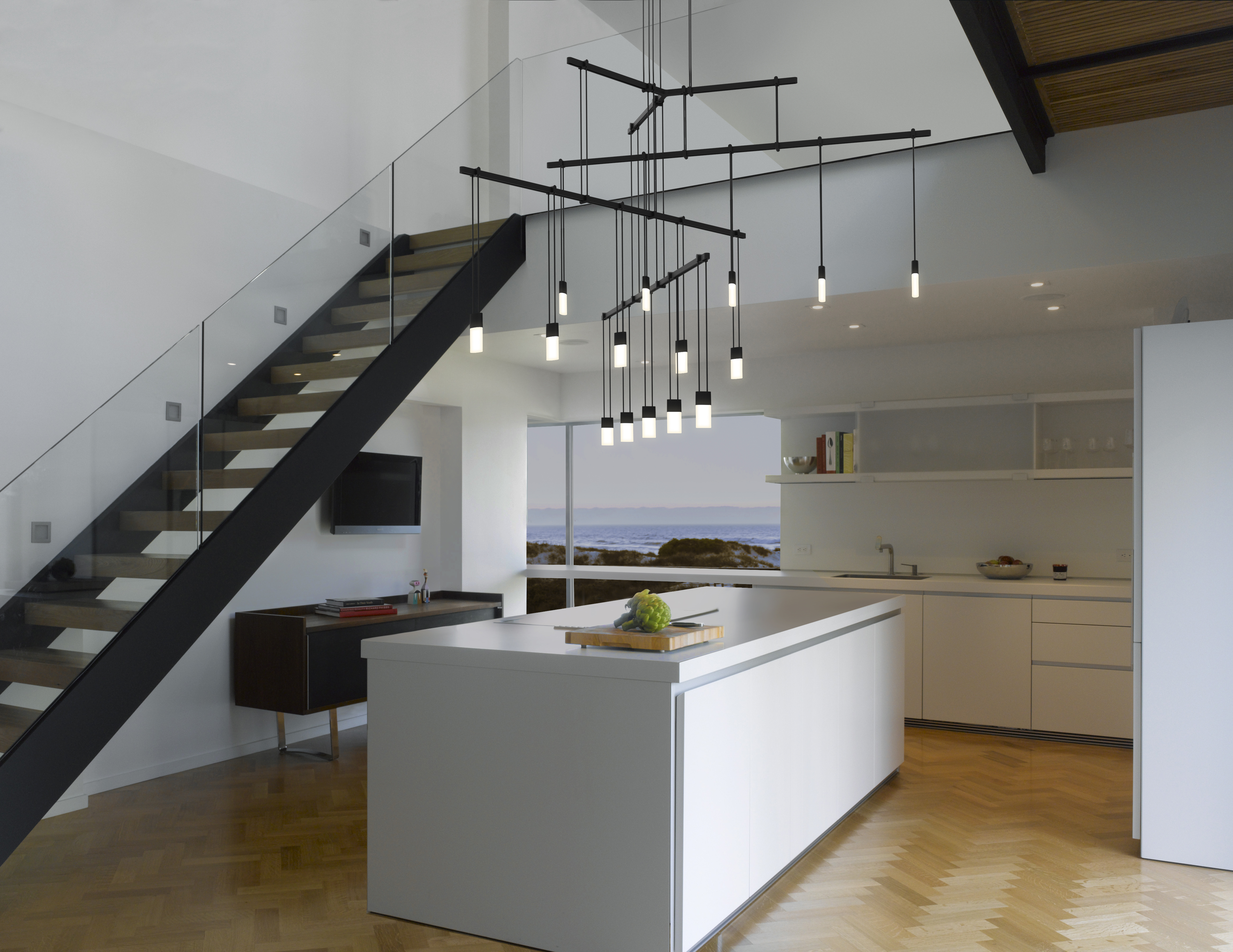
Suspenders Precise is your newest modernist fixture. What are the qualities of the product, how did you come up with the idea to create it and when did it launch?
Suspenders Precise is a system of components that adds lighting functionality and performance to the Suspenders system. Suspended from Hangers or fixed flush to a Power Bar, Suspenders Precise components provide up, down and aimable directional light sources in spot and flood options, as well as direct and reflected ambient light sources. Built on a precisely engineered modular lighting system, Suspenders Precise components screw, twist, and snap-lock in place, forming unified interlocking assemblies.
The vision for the Suspenders is to continuously evolve the system with new decorative and functional possibilities. The exploration of the Suspenders Precise design came out of the need for an expansion of the scope and utility of Suspenders that offer increased functionality, as well as configuration possibilities to the growing Suspenders system. We officially launched Suspenders Precise in February 2017 after the unveiling in January at Lightovation in Dallas, Texas.
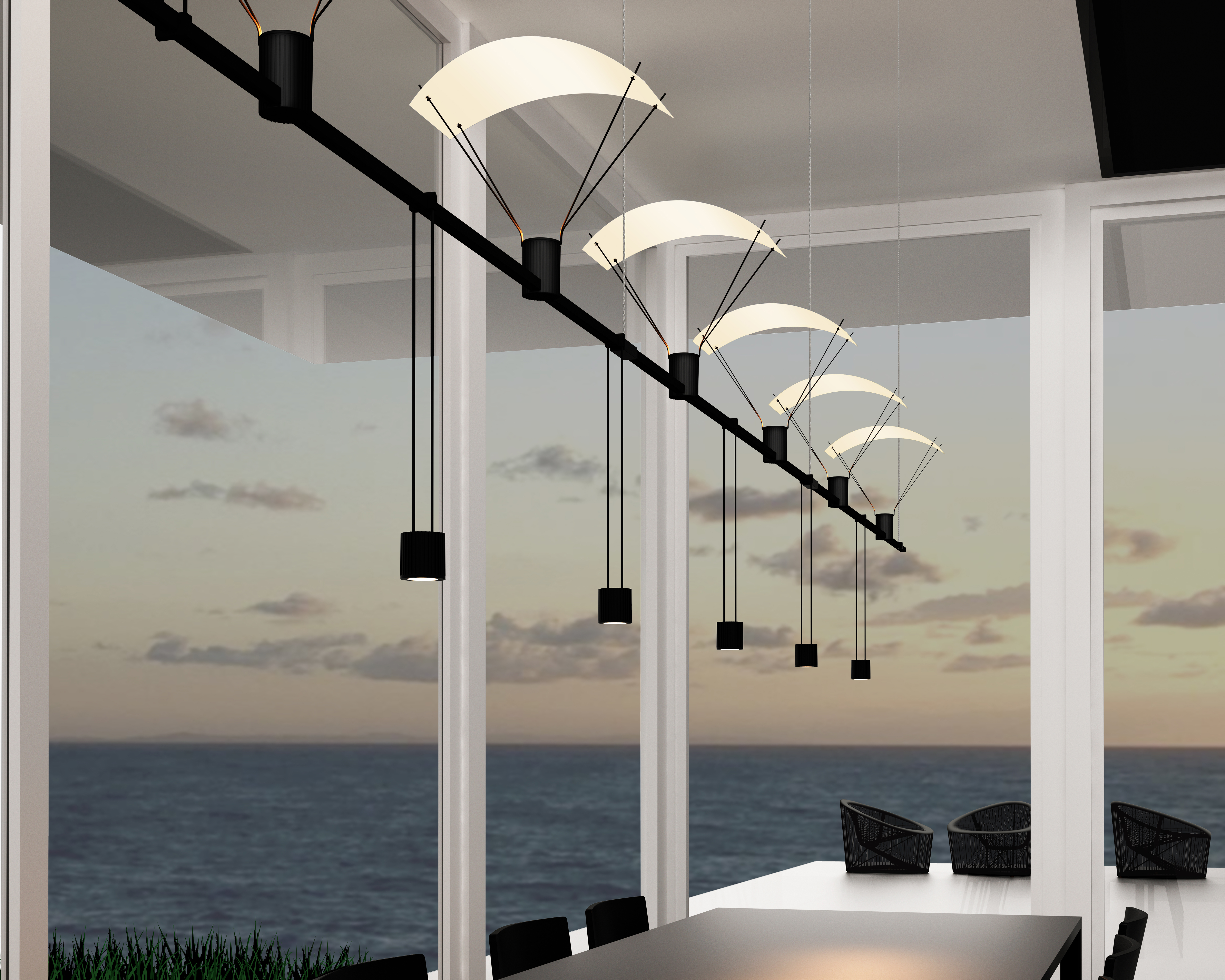
How does Suspenders Precise differ from the Suspenders system?
The original Suspenders system was designed primarily as a decorative, sculptural lighting fixture. The foundational system provides the ability to add focused light or the soft glow of indirect illumination to any application, but it worked best in residential and hospitality spaces. As the ideas for increased utility developed, much of the feedback I received was in regards to the need for increased functionality for commercial environments.
Now, with the introduction of Suspenders Precise, we can offer a multitude of customizable options that include up, down, and aimable directional light sources, making it better suited for workplaces or retail spaces. Color wise, in addition to the original Satin Black offering, all of the new components and Luminaires are now also available in a new Bright Satin Aluminum finish, offering an alternative, softer appearance to any Suspenders system per the request of many architects and designers. Suspenders Precise also expands the range of configuration possibilities. We introduced nine new Luminaire innovations, which project LED illumination in diverse forms, colors and treatments of glass and acrylic, in addition to the Suspenders Precise introductions.
What did your design process for Suspenders Precise look like?
The original concept for Suspenders dates back to the late 1980s, before the technology existed for executing the structure that I had in mind for the fixture. Over time, freed from those technological limitations, we have been able to focus on the basic architecture of the design in terms of what could be accomplished by using an electronic approach to illumination.
Suspenders was designed with only three primary elements: Power Bars, Hangers and Luminaires. The fundamental architecture of the system was based upon linear elements suspended from each other by vertical elements. These elements enable configuration and application potential to spaces of any size. Staying disciplined and adding components only as required to accomplish structural or functional attributes maintained the original design intent and conceptual integrity.
Despite the few materials used in the construction, both Suspenders and Suspenders Precise had quite complicated design and engineering challenges that our team faced. Inventing and developing the manufacturing solutions for connection fittings that would be functional and strong in minimal scale were incredibly challenging. Our engineering team worked with the technical group of our manufacturing partner for countless hours to get it right, which took several attempts and an extensive commitment to sophisticated tooling. We stayed focused and committed to the project, and ultimately the dedication and constant collaboration allowed us to expand the original vision into new directions. Time, talent and the team’s relentless commitment to achieving a vision prevailed.

How do you envision the fixture being used?
Both Suspenders and Suspenders Precise have been designed to fit multiple residential or commercial applications. Our engineering and design teams have built countless configurations and custom layouts for jobs on a daily basis, so we get to see other visions for installations. We are constantly experimenting with new possibilities and further functionality. It can be built across vast open space of a gallery or museum, or in smaller configurations within the intimacy of a restaurant or residence. The compelling logic and minimal scale of the system invites a diversity of interpretation and investigation. For me, the question is not whether there is only one space that defines the ultimate system application, but rather how Suspenders could define many possibilities.

